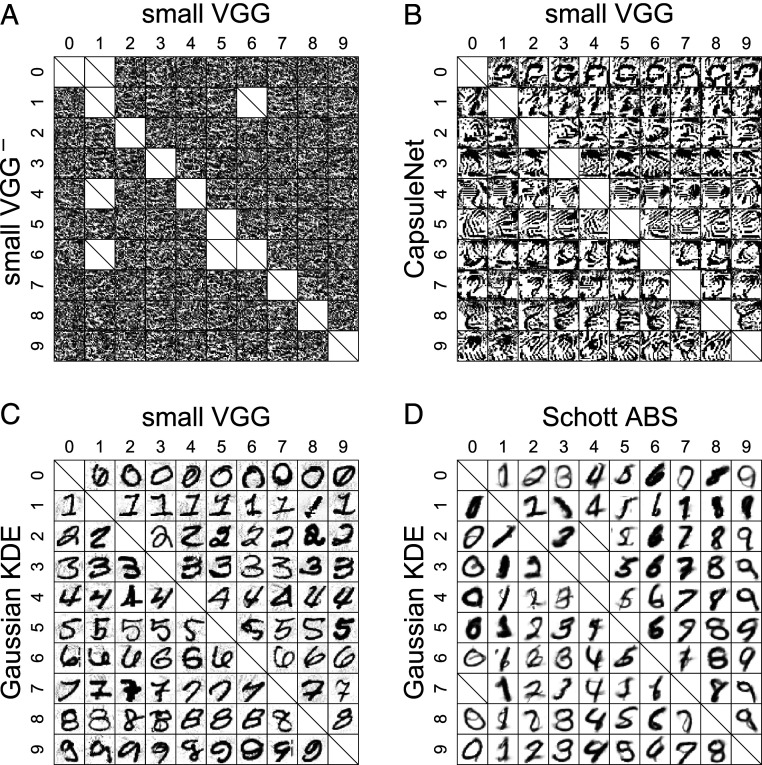Fig. 3.
(A–D) Synthetic controversial stimuli for all digit pairs and four different MNIST model pairs (experiment 1). The rows and columns within each panel indicate the targeted digits. For example, the top-right image in D was optimized so that a 9 (but not a 0) will be detected with high certainty by the Schott ABS model and a 0 (but not a 9) will be detected with high certainty by the Gaussian KDE model. Since this image looks like a 9 to us, it provides evidence in favor of Schott ABS over Gaussian KDE as a model of human digit recognition. Missing (crossed) cells are either along the diagonal (where the two models would agree) or where our optimization procedure did not converge to a sufficiently controversial image (a controversiality score of at least 0.75). See SI Appendix, Fig. S2 for all 36 model pairs.

